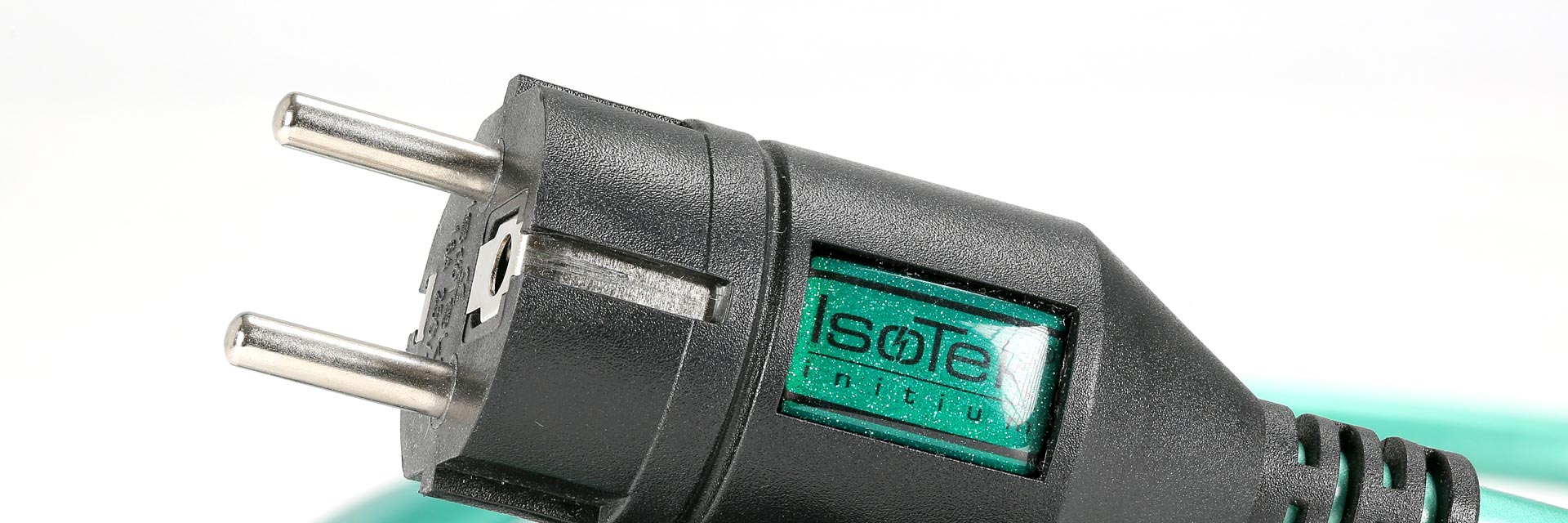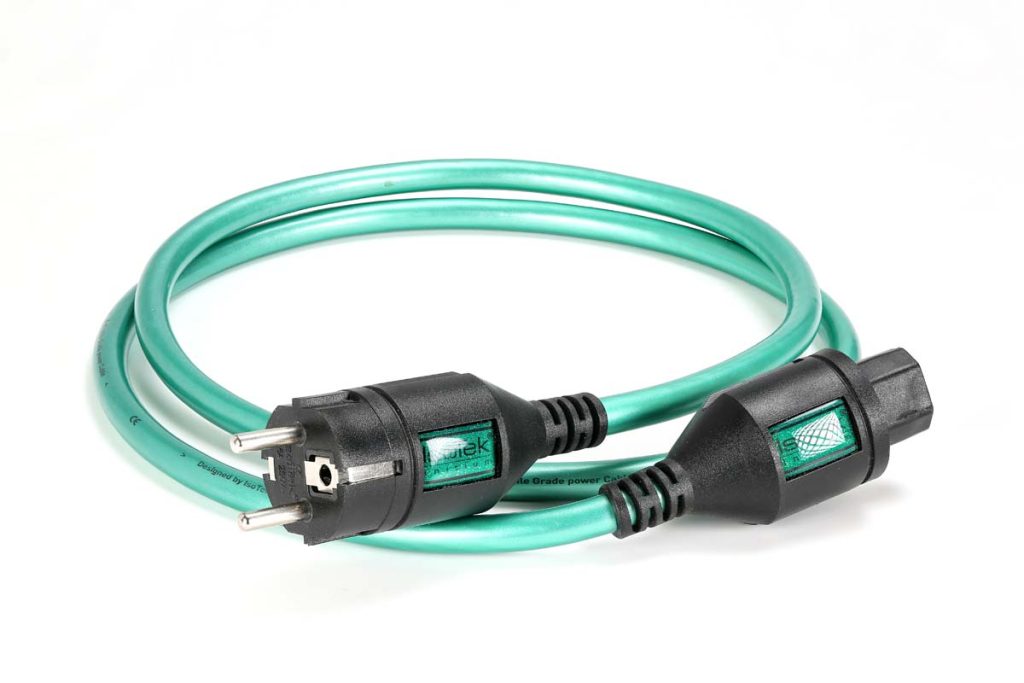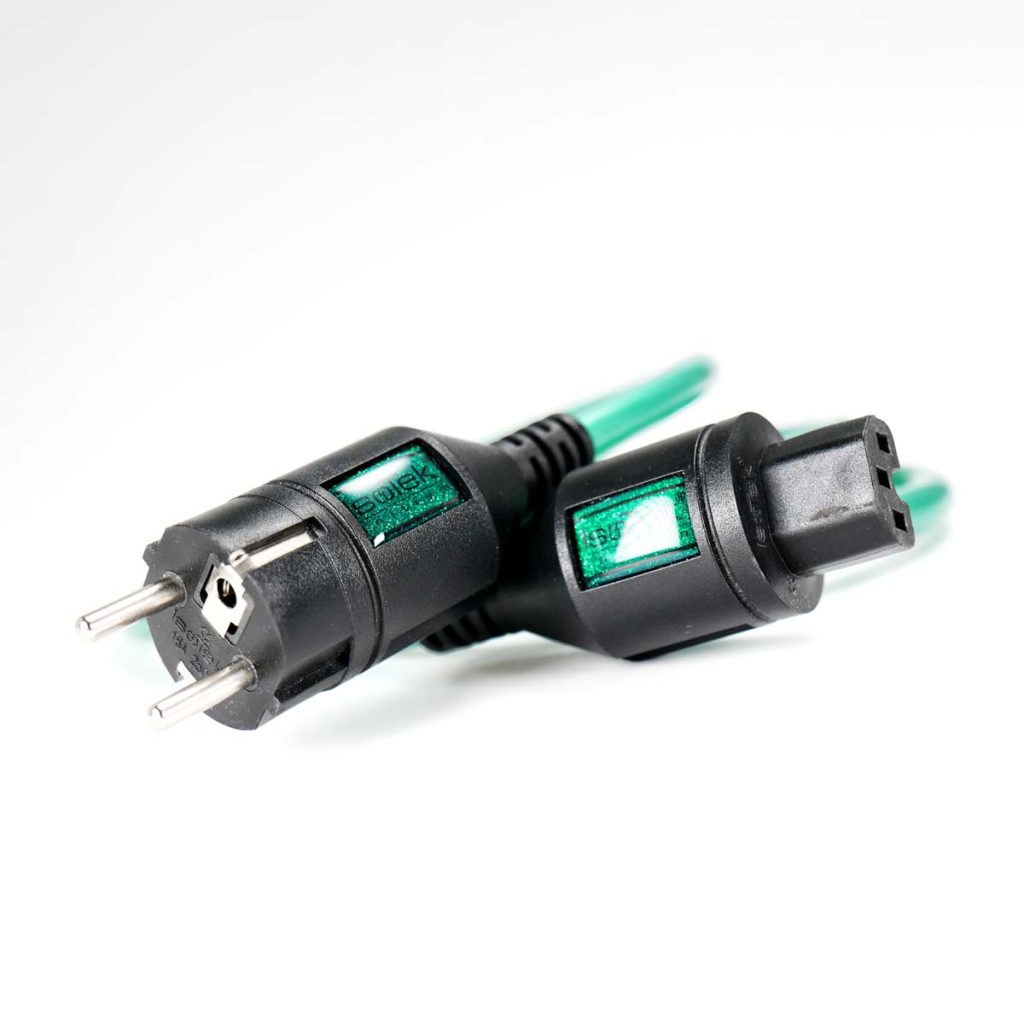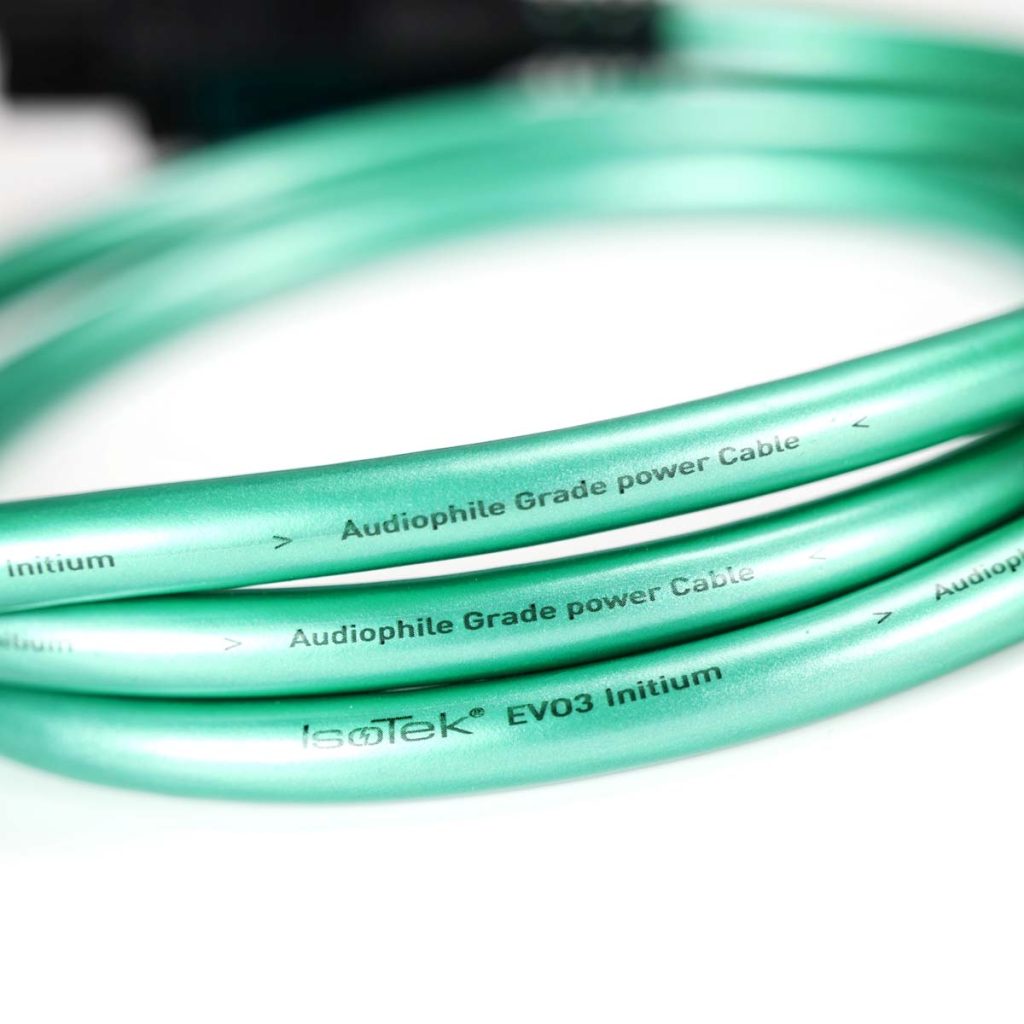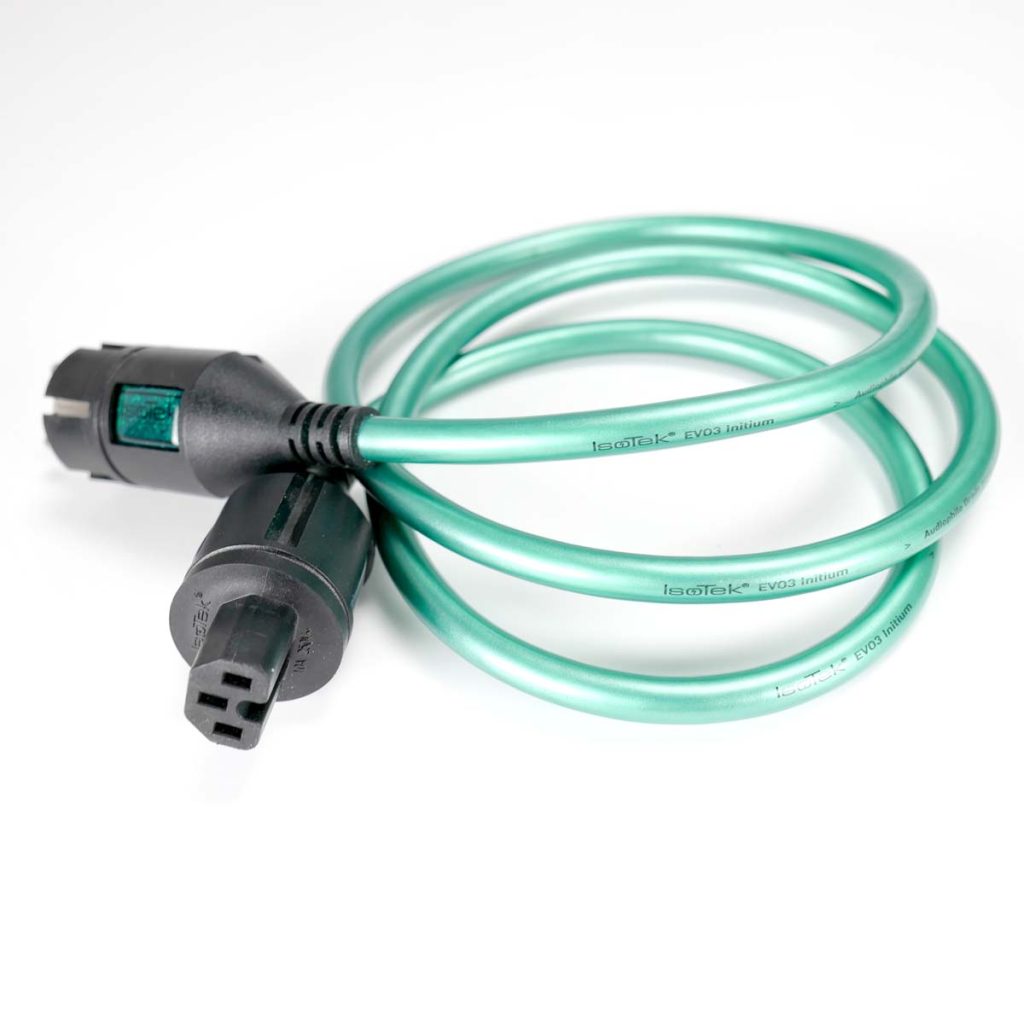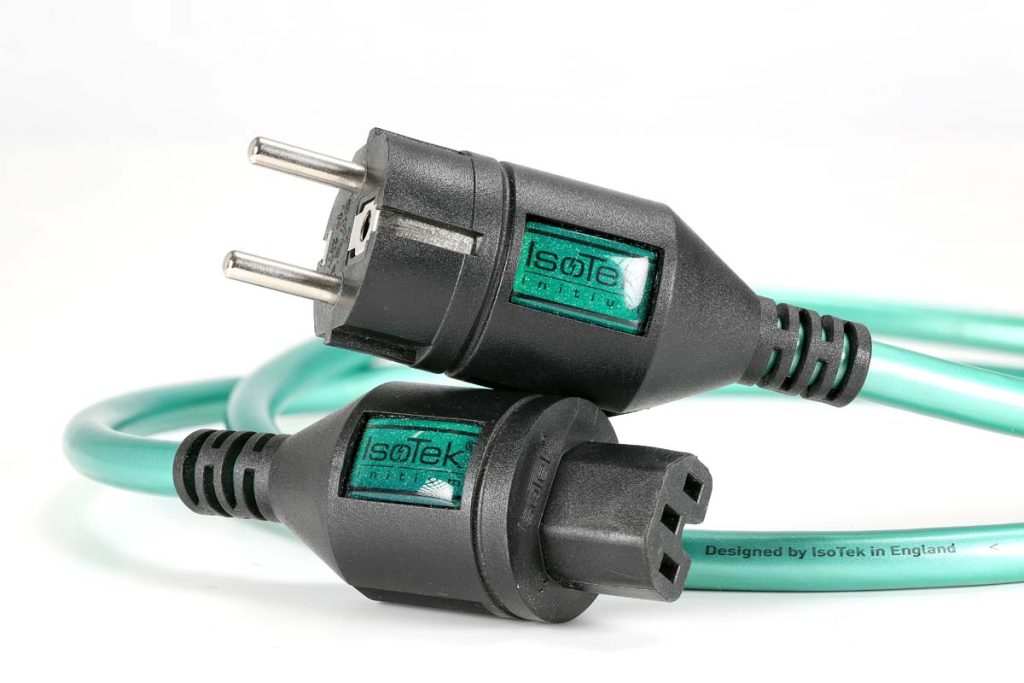You can shell out a lot more on power cables, but the IsoTek EVO3 Initium really calls into question if that would truly be worth it.
As we all know, our line voltage has to flow through dozens of kilometers of cables that have neither been advised upfront of the running direction nor “burned in”. Even our editorial team has come to acknowledge that. But what can’t be denied is that most interference occurs in the short distance between the electrical outlet and the beloved hi-fi system. We have our Wi-Fi permeating the entire house with a signal, possibly even boosted by extenders (after all, you have to be able to use your tablet on the toilet as well). We can even get a cellphone signal in our basements these days, and, besides, whoever turns off their Bluetooth at home? I know, nobody! So we happily fry our brain cells on browning level three and call it progress.
For a little over 15 years now, Keith Martin and his team have been researching how to supply hi-fi system components with power free from differential mode interference (between the devices) and common mode interference (from interspersing radio signals). Depending on the requirements and scale of the audio altar in question, IsoTek has five different product lines that come to the rescue. They range from the Super Titan high-end line power conditioner, which can be easily certified in terms of component status, right through to the affordable but technically sophisticated object under examination, the EVO3 Initium (Latin for “start”).
Just under €80, the power cable’s price tag won’t make any seasoned hi-fi aficionados gasp. In taking a closer look at the EVO3, it’s clear Keith Martin has put a huge amount of manufacturing work into his entry-level cable, which leaves the retail price sounding ridiculous. The construction of the cable makes its sincere aspirations more than clear. Three internal conductors of chemically pure, silver-plated copper have been twisted to ensure the radio-frequency interference mentioned above has absolutely no chance. Polyethylene is used for the dielectric, which perfectly insulates the conductors from each other. Cotton filler and a thin paper wrap are used to encase the inner core in order to reduce microphony. The EVO3’s snazzy green outer jacket is made of PVC. This all results in a cable that, despite a decent cross-section and construction, remains flexible enough to not pull even lightweight devices like my phono stages off the rack.
So it’s not full of intergalactic high-tech gadgets, just extremely solid, tried-and-true materials. The great thing about Initium is not that it’s been made using exotic materials, but rather with a sophisticated design in mind. The plug connections, which have been firmly attached to the cable using injection molding, appear a little on the economical side. But that doesn’t really bother me as I’ve never really managed to work out exactly how much of an effect punched or elaborately milled plugs have on playback quality. Let’s be honest — a lot of what we see every year at HIGH END is primarily designed for buyers to show off what’s in their bank accounts. Surprisingly, however, the inexpensive injection-molded connectors are completely free from backlash and unshakable. This can’t necessarily be said about many significantly more exclusive competitors. In terms of the technology involved and how it feels, the EVO3 Initium definitely gets our thumbs up and a green light.
Then there are the (age-old) questions: A) Can you really hear it? B) Or is, as so often the case, the expectation, created by merely making a change, what results in the audible outcome? I would argue for A. Of course, a power cable won’t turn a mediocre system into a hi-fi superstar, but the difference in sound is actually discernible, even to the less-trained ears of an audiophile newcomer or only slightly more experienced hi-fi fan. These are nuances that add up to a clear “yes”, whether it’s the tighter, crisper playback of funky bass lines; a homeopathic pinch of more splendor and glory with soprano voices; or (and this is my subjective opinion) a little more “air and space” between the performers on stage. As a matter of fact, I usually enjoy playing around with cables to find out where I can improve my chain the most. In the case of the IsoTek EVO3 Initium, my wish would be for complete cabling — from the turntable right through to the Einstein The Tune (which, according to its instructions, really comes into its own when used with high-quality power cables). Affordable, clearly discernible, and extremely well made. You can shell out a hell of a lot more on power cables if you really wanted to, but the EVO3 really calls into question if that would truly be worth it in terms of improving sound.
IsoTek EVO3 Initium power cable | Length: 1.5 meters | Warranty period: two years | Price: €79

